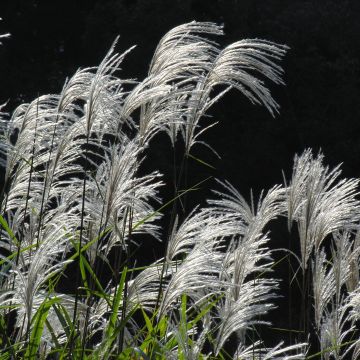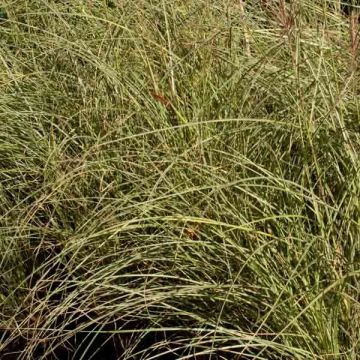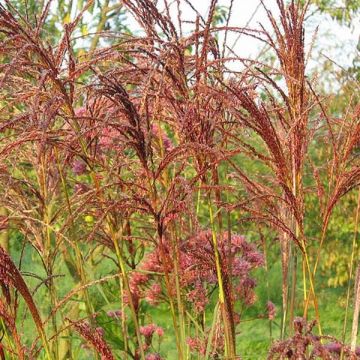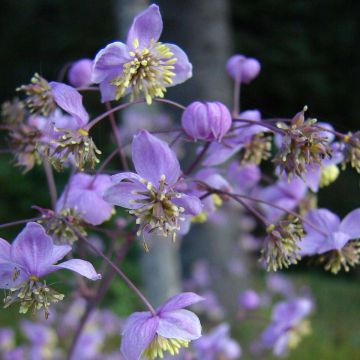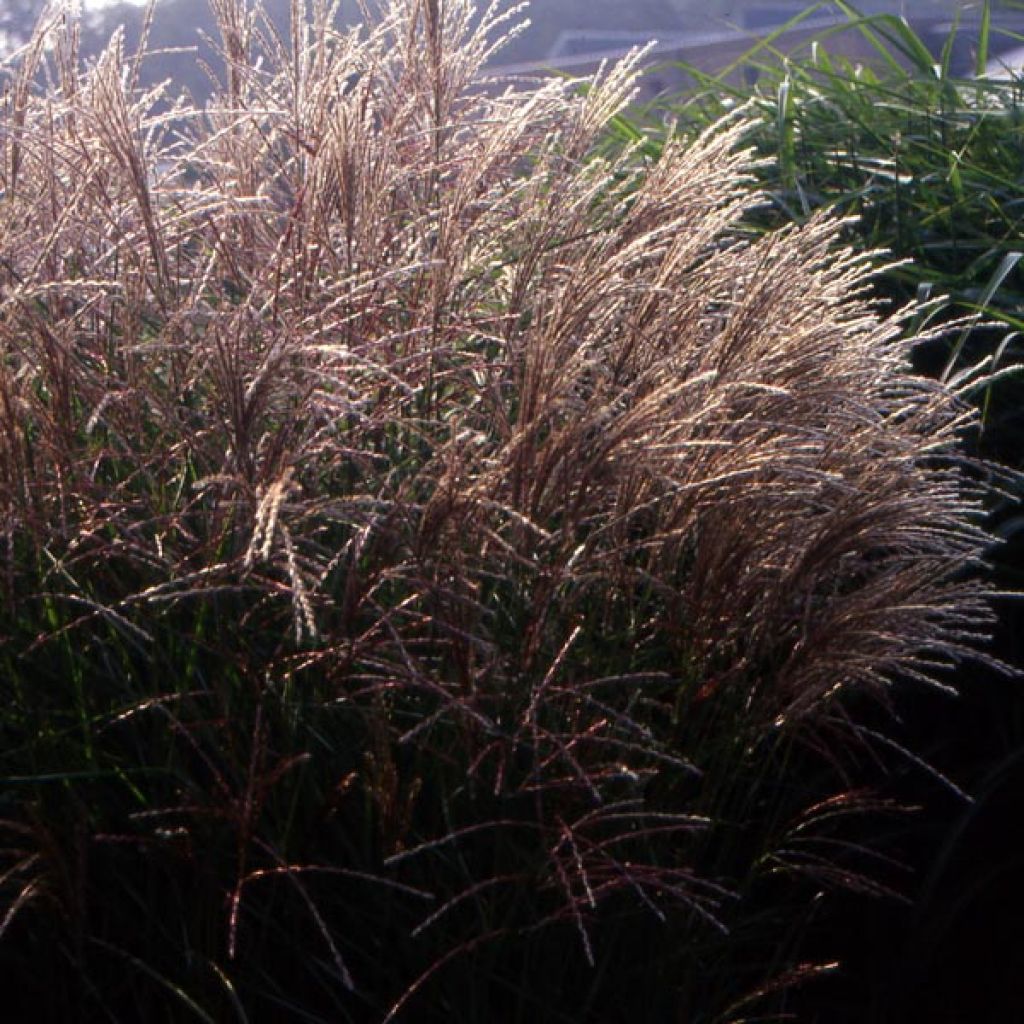

Miscanthus sinensis 'Kleine Fontäne' (Petite Fontaine)
Miscanthus sinensis 'Kleine Fontäne' (Petite Fontaine)
Miscanthus sinensis Kleine Fontäne
Chinese Silver Grass, Eulalia, Maiden Grass, Zebra Grass, Susuki Grass
This item cannot be shipped to the selected country
Delivery charge from €5.90
Delivery charge from €5.90
Delivery charge from €5.90
More information
Schedule delivery date,
and select date in basket
This plant carries a 12 months recovery warranty
More information
We guarantee the quality of our plants for a full growing cycle, and will replace at our expense any plant that fails to recover under normal climatic and planting conditions.
From €5.90 for pickup delivery and €6.90 for home delivery
Express home delivery from €8.90.
From €5.90 for pickup delivery and €6.90 for home delivery
Express home delivery from €8.90.
From €5.90 for pickup delivery and €6.90 for home delivery
Express home delivery from €8.90.

Does this plant fit my garden?
Set up your Plantfit profile →
Description
The Miscanthus sinensis 'Kleine Fontäne' is a superb variety of Eulalia that stands out for its graceful, "fountain-like" habit. Shorter than the 'Grosse Fontäne' variety, this Chinese reed offers an earlier flowering and its autumn foliage turns coppery purple. Its reddish-plumed spikes quickly turn pale silver, creating a magical tableau with the late-season foliage. It is a hardy grass, easy to grow in full sun in any well-drained soil that remains moist in summer. While its foliage is deciduous, its silhouette remains interesting for much of the winter.
The Kleine Fontäne Eulalia belongs to the Poaceae family. It is a horticultural form derived from Miscanthus sinensis, native to China (in the pan-Himalayan region up to 2,000 m (7ft) altitude), Korea, Japan, Taiwan, Malaysia, and New Zealand. This tall perennial grass, with tillering* and short rhizomes, forms an erect then trailing clump, reaching 1.50 m (5ft) in height when in bloom, with a spread of 1.20 m (4ft). The leaves are thin, very long, and very flexible, initially green with a white midrib, then turning burgundy to coppery purple in autumn. Long floral stems emerge from the foliage in July-August. At the end of these stems, silky digitate spikes measure 20 to 30 cm (8 to 12in) in long form, with a reddish-pink hue. As they fade, they take on a silvery shade. The plumes are tiny pinkish flowers that appear and close a little later, only to reopen when mature. They then have a paler and more feathery appearance. The Miscanthus, hardy down to -20 °C, thrives in warm exposures and healthy, rich, deep, and well-drained soil.
*This term refers, for example, to a type of grass that does not have spreading rhizomes.
The Miscanthus Kleine Fontäne is a "grass" perfect for large beds, whose presence brings structure, autumn color, and a lot of grace. It is also suitable for wild gardens and contemplative gardeners. Just place it among giant asters and landscape roses, with its base surrounded by creeping bugles or heucheras, watch it grow and become fuller, play with the wind and the low autumn light, and bend under the rain. When winter comes, just like conifers, it lights up the garden with its reassuring silhouette. It has its place in contemporary designs, with clean lines, in the company of bamboo or ferns if the soil is moist. Miscanthus can also be planted as a hedge, forming a screen along a path, to isolate a part of the garden, or to hide the view of the street or a neighbour's garden. Growing them in large pots is also possible. Finally, this Chinese Reed can be used to create lovely dried bouquets.
Report an error about the product description
Miscanthus sinensis 'Kleine Fontäne' (Petite Fontaine) in pictures


Flowering
Foliage
Plant habit
Botanical data
Miscanthus
sinensis
Kleine Fontäne
Poaceae
Chinese Silver Grass, Eulalia, Maiden Grass, Zebra Grass, Susuki Grass
Cultivar or hybrid
Other Miscanthus
Planting and care
The Miscanthus sinensis 'Kleine Fontäne' thrives in warm exposures and healthy soil, not too rich, deep, well-drained, but remaining moist in summer, without stagnant moisture in winter. A soil that is too rich can encourage lush vegetation at the expense of flowers. A spring compost application can be beneficial in very poor soils. This plant tolerates occasional drought if the soil is deep. It can adapt to poor soil, but it will be less imposing and grow slower.
Warm-climate grasses such as Miscanthus, Panicum, and Pennisetum grow in late spring; they flower after mid-summer and are usually cut back in late winter. It is, therefore, preferable to plant them in spring after the strongest frosts have passed.
Miscanthus are good plants for containers. Choose a large container (minimum 45L) filled with a fertile, well-draining, and flexible growing medium for planting. A mixture composed of 20% good garden soil, 20% mixed draining elements (pumice or gravel or coarse river sand), and 60% horticultural compost. Apply well-decomposed compost once or twice yearly (end of winter and autumn) or slow-release fertilizer. When it becomes less floriferous, divide the clump and collect the peripheral shoots for replanting.
Planting period
Intended location
Care
-
, onOrder confirmed
Reply from on Promesse de fleurs
Summer flowering perennials
Haven't found what you were looking for?
Hardiness is the lowest winter temperature a plant can endure without suffering serious damage or even dying. However, hardiness is affected by location (a sheltered area, such as a patio), protection (winter cover) and soil type (hardiness is improved by well-drained soil).

Photo Sharing Terms & Conditions
In order to encourage gardeners to interact and share their experiences, Promesse de fleurs offers various media enabling content to be uploaded onto its Site - in particular via the ‘Photo sharing’ module.
The User agrees to refrain from:
- Posting any content that is illegal, prejudicial, insulting, racist, inciteful to hatred, revisionist, contrary to public decency, that infringes on privacy or on the privacy rights of third parties, in particular the publicity rights of persons and goods, intellectual property rights, or the right to privacy.
- Submitting content on behalf of a third party;
- Impersonate the identity of a third party and/or publish any personal information about a third party;
In general, the User undertakes to refrain from any unethical behaviour.
All Content (in particular text, comments, files, images, photos, videos, creative works, etc.), which may be subject to property or intellectual property rights, image or other private rights, shall remain the property of the User, subject to the limited rights granted by the terms of the licence granted by Promesse de fleurs as stated below. Users are at liberty to publish or not to publish such Content on the Site, notably via the ‘Photo Sharing’ facility, and accept that this Content shall be made public and freely accessible, notably on the Internet.
Users further acknowledge, undertake to have ,and guarantee that they hold all necessary rights and permissions to publish such material on the Site, in particular with regard to the legislation in force pertaining to any privacy, property, intellectual property, image, or contractual rights, or rights of any other nature. By publishing such Content on the Site, Users acknowledge accepting full liability as publishers of the Content within the meaning of the law, and grant Promesse de fleurs, free of charge, an inclusive, worldwide licence for the said Content for the entire duration of its publication, including all reproduction, representation, up/downloading, displaying, performing, transmission, and storage rights.
Users also grant permission for their name to be linked to the Content and accept that this link may not always be made available.
By engaging in posting material, Users consent to their Content becoming automatically accessible on the Internet, in particular on other sites and/or blogs and/or web pages of the Promesse de fleurs site, including in particular social pages and the Promesse de fleurs catalogue.
Users may secure the removal of entrusted content free of charge by issuing a simple request via our contact form.
The flowering period indicated on our website applies to countries and regions located in USDA zone 8 (France, the United Kingdom, Ireland, the Netherlands, etc.)
It will vary according to where you live:
- In zones 9 to 10 (Italy, Spain, Greece, etc.), flowering will occur about 2 to 4 weeks earlier.
- In zones 6 to 7 (Germany, Poland, Slovenia, and lower mountainous regions), flowering will be delayed by 2 to 3 weeks.
- In zone 5 (Central Europe, Scandinavia), blooming will be delayed by 3 to 5 weeks.
In temperate climates, pruning of spring-flowering shrubs (forsythia, spireas, etc.) should be done just after flowering.
Pruning of summer-flowering shrubs (Indian Lilac, Perovskia, etc.) can be done in winter or spring.
In cold regions as well as with frost-sensitive plants, avoid pruning too early when severe frosts may still occur.
The planting period indicated on our website applies to countries and regions located in USDA zone 8 (France, United Kingdom, Ireland, Netherlands).
It will vary according to where you live:
- In Mediterranean zones (Marseille, Madrid, Milan, etc.), autumn and winter are the best planting periods.
- In continental zones (Strasbourg, Munich, Vienna, etc.), delay planting by 2 to 3 weeks in spring and bring it forward by 2 to 4 weeks in autumn.
- In mountainous regions (the Alps, Pyrenees, Carpathians, etc.), it is best to plant in late spring (May-June) or late summer (August-September).
The harvesting period indicated on our website applies to countries and regions in USDA zone 8 (France, England, Ireland, the Netherlands).
In colder areas (Scandinavia, Poland, Austria...) fruit and vegetable harvests are likely to be delayed by 3-4 weeks.
In warmer areas (Italy, Spain, Greece, etc.), harvesting will probably take place earlier, depending on weather conditions.
The sowing periods indicated on our website apply to countries and regions within USDA Zone 8 (France, UK, Ireland, Netherlands).
In colder areas (Scandinavia, Poland, Austria...), delay any outdoor sowing by 3-4 weeks, or sow under glass.
In warmer climes (Italy, Spain, Greece, etc.), bring outdoor sowing forward by a few weeks.

































